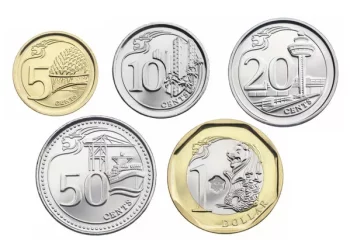The Fibonacci sequence is a series of magic numbers: 0, 1, 1, 2, 3, 5, 8, 13, 21, 34, 55, 89, 144, etc.
Each number is the sum of the first two numbers. The most commonly used key numbers are 23.6 percent, 38.2 percent, 50 percent and 61.8 percent, respectively.
These figures were obtained by using ratios from the Fibonacci series.
These numbers represent an important reversal point in the market.
Fibonacci pullbacks are the most common way to find support and resistance levels in trading.
Find the Fibonacci pullback line in /MT5 and plot it with the help of the highs and lows in the K-chart.
The 23.6%, 38.2%, 50% AND 61.8% POSITIONS ARE FUTURE support OR resistance levels.
Fibonacci callbacks can be applied to different time periods.
Specific drawing method: In the uptrend, ¢Ù insert the “Fibonacci correction line”;
¢Ú First click the low point in the K chart, and then drag it to the later high point;
¢Û 23.6%, 38.2%, 50% and 61.8%, which may be future support levels.
The most important are the split gears corresponding to 38.2% and 61.8%.
In a pullback, 0.382 has strong support if it is a strong pullback, and 0.618 is the strongest support if it is a weak pullback.
In the downtrend, ¢Ù insert “Fibonacci pullback line”;
¢Ú First click the high point in the K chart, and then drag to the low point.
¢Û 23.6%, 38.2%, 50% and 61.8% May be the future resistance levels in the rebound market.
In THE rally, 61.8% IS strong resistance, 38.2% is weak resistance.
A high or low point is the highest or lowest point in a price, the top or bottom of a shadow line.
The point here is to determine the highs and lows of the band.
There are two ways to confirm this. One is to compare the highs or lows to the left and right of the K line.
If the high point of at least two K lines on the left and right sides is below the K line, it is determined as the band high point.
Another approach is to take the band high (low) of the past 30K line as the starting band high (low).
Each person may choose different highs and lows, and the location of the dividing line.
Fibonacci Extension Fibonacci Extension (extension) differs from Fibonacci callback in that the extension will be more than 100%.
We usually use Fibonacci pullbacks to determine stops and Fibonacci extensions to determine profit targets.
The most commonly used Fibonacci extension levels include 61.8%, 100%, and 161.8%.
The specific drawing method: an upward trend, ¢Ù in MT4/MT5 software, directly select insert object — Fibonacci extension line;
¢Ú Select the low point of the band, and then drag it to the high point of the later stage;
¢Û Finally, connect the band high with the recent band low.
The three lines correspond to resistance levels.
In the downward trend, ¢Ù in the MT4/MT5 software, directly select the insertion object — Fibonacci extension cord;
¢Ú Select the high point of the band, and then drag it to the low point in the later stage;
¢Û Finally, the band low point and the recent band high point.
The three lines correspond to the support level.
Generally speaking, the market trend will rebound between the 100% and 161.8% expansion line, which is also known as the stop margin.
Use Fibonacci to set a stop loss in a rising market, set a stop loss below support to prevent it from being punctured in a falling market;
On A DECLINE, STOPS are placed above the resistance level to prevent it from being broken.
The specific space to set a stop loss can be tested based on market movements and with the help of the average true amplitude index ATR.
If the ATR value is small, the stopping loss space is generally 1-2 times the ATR value.
If the ATR value is large, the stop-loss space is 2-4 times of the ATR value.
Because the fluctuation size of different varieties is also different.
The more active the breed, the greater the ATR value, the greater the need to set the stop loss, so it is impossible to define how many ATR is large and how many ATR is small.
Gold and oil move more than they do, so stops should be looser.
/ and the dollar/currency pair are sometimes volatile.
Fibonacci can be used to identify important support and resistance levels, which traders can use to place orders against the trend.
However, each technique has drawbacks, and sometimes Fibonacci support and drag are ineffective.
In general, we need to combine other technologies.
The most commonly used is a combination of Fibonacci and trend lines.
The intersection of the trend line with the Fibonacci secant is an important entry point.
In an uptrend, potential buy points can be found at the intersection of the trendline and the Fibonacci pullback line;
In a downtrend, the intersection of the trendline and the Fibonacci retracement line is used to look for potential sell points.
These are the most commonly used parts of Fibonacci.
In addition, you can combine Fibonacci with other indicators such as moving averages or K-charts to determine the approach.
The Fed may step on the accelerator as global central bank resolutions come thick and fast.
Please pay attention to the specific operation, the market is changing rapidly, investment needs to be cautious, the operation strategy is for reference only.


























